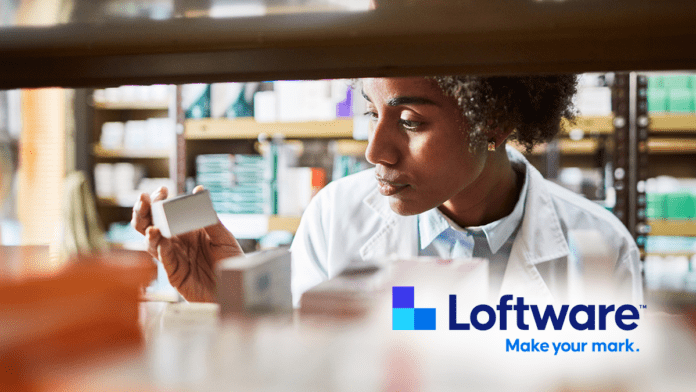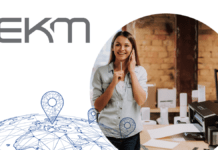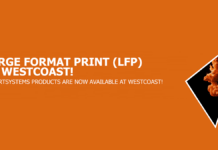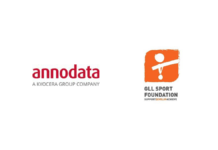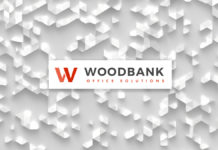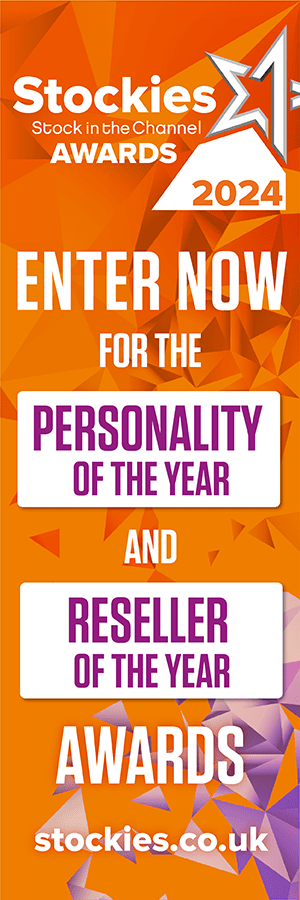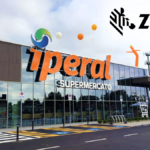With a move to cloud among many warehousing and supply chain operations ongoing, Loftware is ideally placed to capitalise on this and help resellers within this market to do similar.
It is a time of change in the supply chain, warehousing and logistics sectors. As the global supply chain becomes ever more complex – and with greater amounts of materials and products travelling across the world than ever – there is a need to oversee it more closely than ever.
As a result, there is a wave of cloud adoption and automation among businesses in the sector, according to Paul Vogt, VP partner strategies at Loftware.
“The supply chain is a physical environment, it’s all about moving physical items across the globe, which is I think why the supply chain has been slower than some other sectors to adopt cloud,” he says. “But now I’m seeing many more companies in the supply chain specifying cloud.”
This is backed up by results from Loftware’s recent global survey, which draws on insights from more than 300 labelling, packaging, and supply chain professionals across industries in 55 countries. It found that investing in cutting-edge technologies such as cloud computing, AI and IoT solutions is no longer a tactical necessity but an enabler for business growth and agile supply chain operations.
“Some of it is about modernisation but regulation is driving it too, and some of that regulation is tied into the sustainability agenda and demand for certain standards on that,” adds Paul.
He points again to the results of Loftware’s survey, which found that 77% of respondents said that they are actively working on projects directly impacted by stricter regulations related to sustainability. “That includes things like reducing fuel, waste, packaging materials, tightening the supply chain to avoid loss and counterfeit,” he says.
Paul adds that businesses are looking to solutions such as Azure, AWS, Google Cloud, as they are renowned for being secure. “That old fear of security and data protection issues with cloud is going away and customers see that the advantages are so overwhelming,” he says. “People can work from anywhere and always have full visibility of their supply chain – they can literally tap into what is going on at a supplier in Hong Kong, Havana or Hawaii. That is blowing the minds of our customers, they love it.”
Software boost
This move to cloud helped boost Loftware during 2023, which in general was a year where the market was still working out the problems from the previous years, even if some were trying to deceive themselves that everything was back to normal, Paul adds. “In the software world we did very well, but our hardware partners and our partners who supply hardware to end users had a really tough year,” he says.
“We saw a spike in 2022 in hardware sales when the supply chain had its blip. But last year the supply chain issues seemed to be coming to a resolution and we saw an uptick in software demand.
“In 2023, I don’t know whether it was consolidation or customers were reorganising themselves but in general they didn’t buy hardware, but they did buy software. Great for us, bad for hardware providers. But our partners who work directly with end users providing systems were very busy. As a result, we were very busy with a lot of SAP, Oracle Netsuite and Microsoft Dynamics implementations as end users were looking to streamline and improve the processes of supply chain printing.”
Embracing traceability
Another reason for investing in the cloud and supply chain printing solutions is help enhance the traceability of products wherever they may be in the supply chain. “In the supply chain, there is an emphasis on data,” says Paul. “Companies are embracing traceability, which is all about tracking and tracing the physical product. But the way they do that is by capturing the data that’s on the label or the RFID tag that is identifying the physical product.
“As soon as you’ve captured that data goes up into the cloud. I’m sat in London, and I have full visibility of where my product is, in what conditions it is, at what speed it’s going, where it’s being routed, where it’s going to end up and when. And I know exactly where it came from.
“Being able to track from raw materials, components and ingredients right the way through the supply chain to the consumer is the vision, but we’re not there yet. We’re getting there, but that’s very much where regulation and customer demand is driving it.”
Consumer demand is driving traceability, he adds. “Previously, track and trace back through the supply chain was very much driven by efficiencies and cost reduction. But now 82% of our survey respondents said that it’s consumer preference that increasingly is the main driver behind these track and trace sustainability initiatives, which we found interesting, because that means it is consumer demand that’s saying suppliers have to be fair trade and they want to see where the ingredients came from and that the product they are buying was developed sustainably and by workers who were paid properly.”
Increased traceability helps to back up any claims to ethicalness or sustainability that the manufacturer or retailer makes. “The supply chain has got so sophisticated that it’s possible to have ingredients, components or raw materials in your product, literally from anywhere in the world,” Paul says. “The consumer is now demanding to know where from exactly. That can be hard for a local manufacturer who’s sourcing ingredients from all over, which is possible, but our technology enables them to have that information.
“Cloud is the enabler behind what customers are asking for. We’re seeing all the ERP and business systems are moving to the cloud, which is enabling this kind of track and trace.
“Along with that, the RFID software providers with whom we work are all going to the cloud too. And we work with data platforms that manage to capture data printed by us in Hong Kong, Havana and Hawaii and can make that data available to the brand, the supply chain owners.
“We’re seeing the fulfilment of the promise that’s going back years, where a supply chain print software supplier like us is working with SAP, Kesla, Tracelink, data providers and RFID providers. You have this incredible supply chain of technology and data making all visibility possible.”
Milestone events
All these changes in the market helped Loftware to hit a key milestone in 2023 – the company calculated that more than 51 billion labels were produced using its technology during the 12 months.
“That is pretty mind blowing,” says Paul. “And that is global, which shows the reach and the impact that we’re making, whether it’s in food, life sciences, chemicals, consumer packaged goods, automotive, electronics, it right across the spectrum of industry.
It’s also indicative of how the supply chain is automating and making the next stage of track and trace and sustainability possible.”
Increasing complexity
As part of this, the labels themselves are getting much more complex: it’s not just a sticky label with some print on it anymore. It’s so much more than that, which makes things a whole lot more complicated, but provides more data and security, especially for anti-counterfeit measures.
“Again, as you get visibility over your supply chain, you can identify holes and gaps and fill them,” says Paul. “Two areas that are critical here are pharmaceuticals, because you don’t want to get rogue pharmaceuticals into the supply chain and food – again, there are horror stories of contaminated food or fake food getting into the supply chain. Those two are areas of where our technology is being applied in a very practical and vital way to protect the supply chain.”
Changing demands
This is also indicative of how customer demands are changing, and how innovation is being driven by this. But where will it go next?
Paul points to a result from Loftware’s recent survey. “This was the highest number in our survey, so it was very eye catching: 91% of respondents said they are seeking a single printing platform,” he says. “What that means is, again, the digitisation of the physical supply chain. In other words, automating, simplifying, streamlining the IT behind the supply chain.
“Companies have been doing barcode supply chain for 30 years. Of course, legacy system after legacy system has grown up over the years, with little fixes here, a little solution there. So now, you get these modern, sophisticated companies with a broken supply chain, because in my area of printing, they’ve got one print solution over here and another there and another there, and they’re all disconnected.
“Supply chain owners now realise this presents a risk of error and they’re facing fines for mistakes, and it’s costing them money to maintain all these systems. Thirdly, and probably most importantly ultimately, is lack of traceability, because if they’re disconnected, then they can’t see what’s going on.
“What many are doing now is centralising and streamlining. So their production facility, their warehouse facility, their receiving warehouse and shipping are all on the same printing and data capture systems, and we’re a part of that.
“We hit another milestone last year of having 20,000 printers connected into our cloud. That’s 20,000 devices which are part of this new connected chain, so that individual customers have got visibility and control over everything they’re printing.
“Companies are trying to reduce the number of software packages and different processes they’re having, simplifying it, streamlining it, ideally into one process. So that’s a big thing. Companies are adopting our printing platform as the standard throughout their supply chain.”
Bright future
With these strong trends set to continue into 2024 and beyond, Paul is optimistic for Loftware – and the wider print sector’s – prospects for the future.
Moving to the cloud has an impact for channel partners, and while it might not be easy to do – and it requires a big shift in business model – now is the time to do it, Paul says.
“Part of my job is to support our partners to make that shift, to make it as painless as possible,” he says. “Those that made the shift three, four years ago are now really seeing the benefits of it.
“It can be tricky, because you actually reduce your income on day one, as rather than selling a perpetual licence for the full value, you sell just this year’s portion and then next year you invoice for that again, and then next year you invoice for that again. In year one, it’s quite hard, but the results are there over the medium-term and that’s what we are looking to.”


